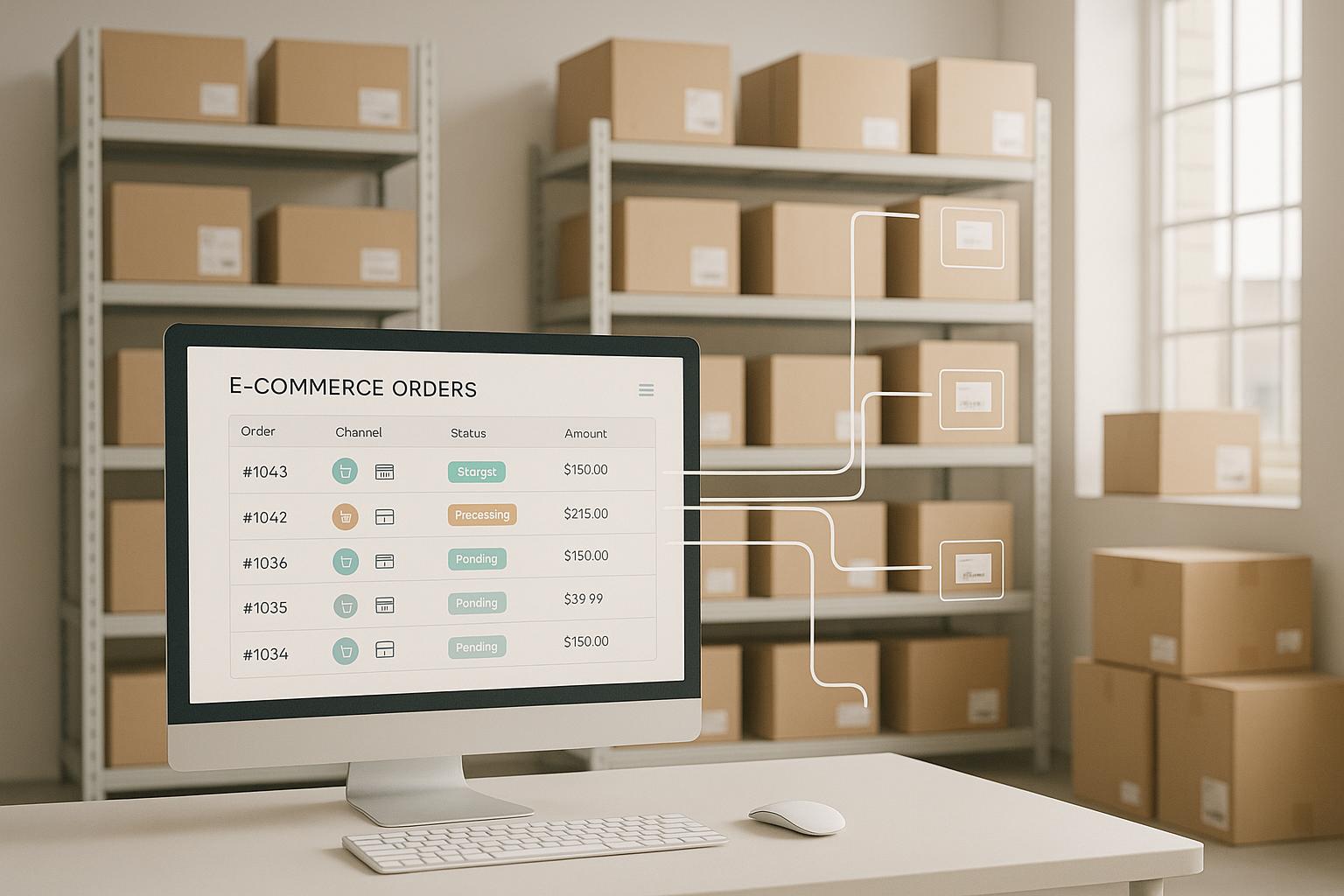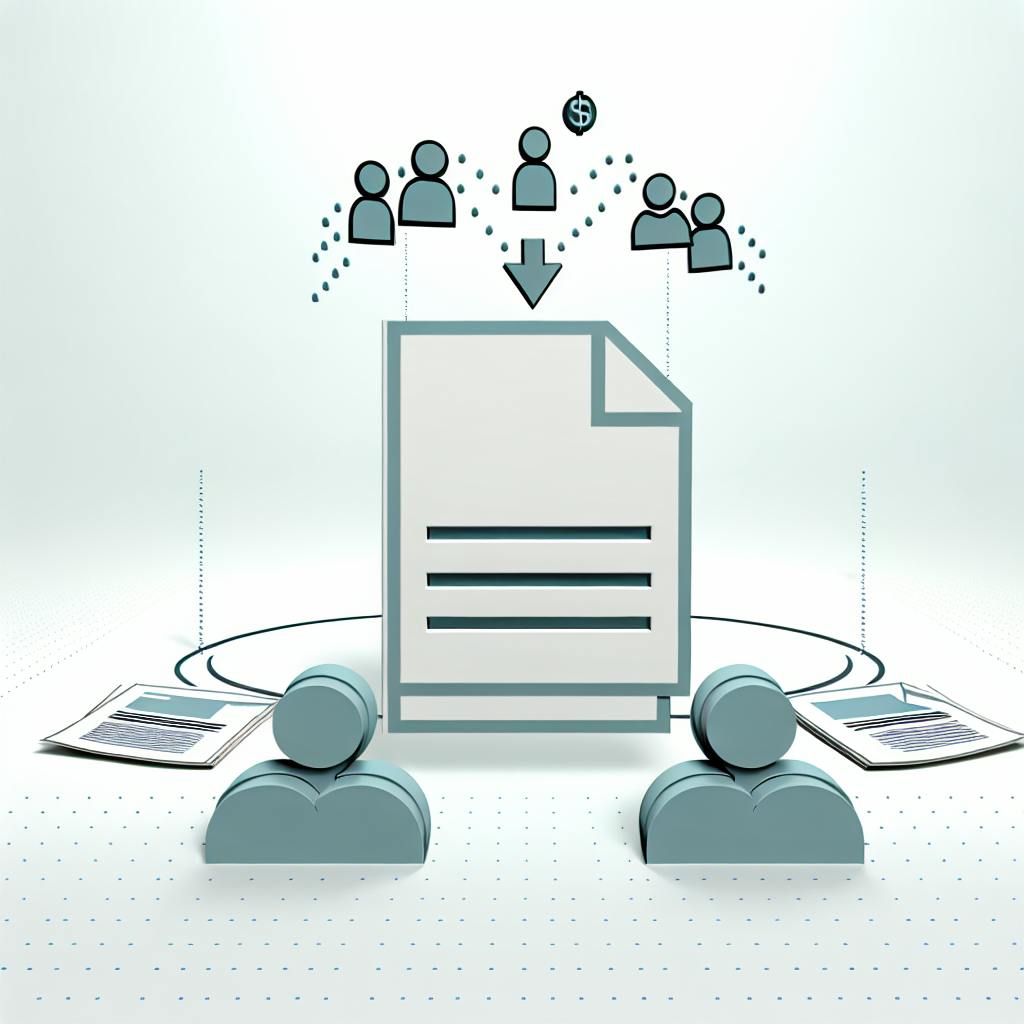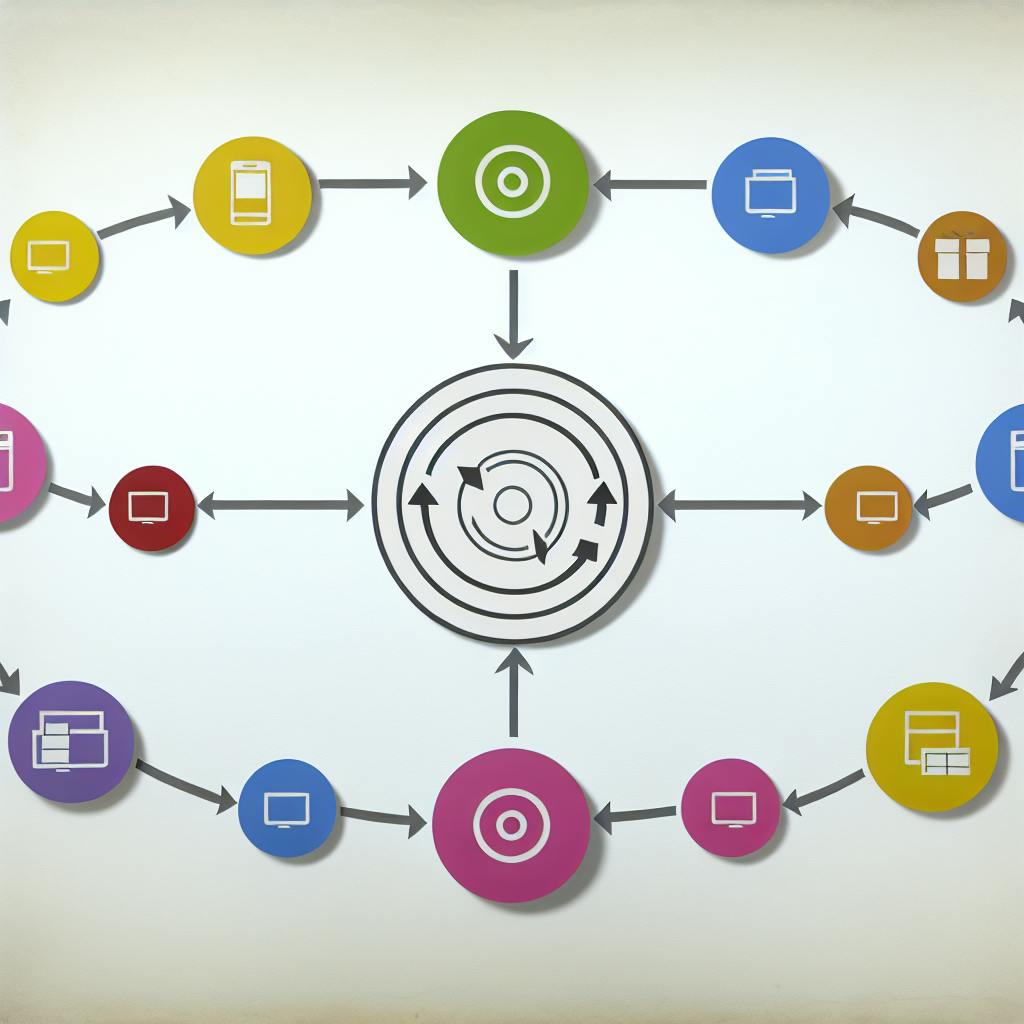Finding the right IT management software is critical for small businesses, but with so many options, it can be overwhelming to identify the best solutions.
This comprehensive guide explores the essentials of IT management platforms tailored for small business needs—from core features to integration considerations—so you can make an informed decision.
You'll discover the key benefits of IT management software, evaluate top tools on the market, learn best practices for integration and training, and ultimately harness these systems to optimize operations and spur sustainable growth.
Introduction to IT Management Software for Small Business
IT management software provides a centralized platform to oversee and optimize a small business's technology systems and IT infrastructure. By streamlining hardware and software management, it enhances efficiency, productivity, and security.
Essentials of IT Management Software
IT management platforms offer various capabilities to support small business success:
- Asset Management: Track hardware and software assets across the organization. Manage licenses, warranties, configurations, and more.
- Monitoring & Alerts: Get real-time insights into system health, performance metrics, and potential issues. Configure alerts for proactive management.
- Patch Management: Automate system and software updates across all devices to boost security and stability.
- Remote Access & Control: Securely access any device or system remotely to provide instant support and maintenance.
- Reporting & Analytics: Gain data-driven visibility into IT infrastructure health, user activity trends, and opportunities to optimize operations.
Benefits of IT Management Software for Small Businesses
Effective IT management delivers quantifiable advantages:
- Cost Savings: Reduce spending on unnecessary software and hardware. Streamline processes to curb IT costs.
- Increased Productivity: Minimize downtown and equip employees with reliable, optimized technology resources.
- Enhanced Security: Establish safeguards against cyberthreats. Rapidly detect and resolve vulnerabilities.
- Simplified IT Oversight: Consolidate management and monitoring of the entire IT environment through a unified dashboard.
Best IT Management Software for Small Business
Top-rated platforms designed for SMBs include:
- ManageEngine OpManager
- SolarWinds Web Help Desk
- Freshservice
- Datto RMM
- Zoho ManageEngine ServiceDesk Plus
These solutions stand out for their intuitive interfaces, customizable dashboards, mobile device support, advanced automation capabilities, affordable pricing, and suitability for small business environments.
Integrating IT Management Software into Small Businesses
Follow best practices for seamless adoption:
- Set clear goals and determine must-have features before selecting a solution.
- Gradually roll out implementation across devices and systems.
- Provide sufficient training and resources for staff adoption.
- Leverage automation to reduce manual processes.
- Continuously monitor analytics and user feedback to maximize value.
With the right IT management platform, small businesses can transform daily technology oversight activities from a complex hassle to an efficient, streamlined operation.
What is the best software for a small business?
Choosing the right software is crucial for small businesses to streamline operations and boost productivity. Here are some of the best programs to consider:
Accounting and Finance Software
QuickBooks and Wave Accounting are two popular accounting platforms that help track income, expenses, invoices, payments, and more. They provide real-time financial visibility to make informed decisions. Both options have free plans for early-stage businesses.
Project Management Tools
ClickUp enables easy task management with features like reminders, dependencies, and statuses to stay on top of everything. It also facilitates team collaboration with shared dashboards and customizable views. They offer a forever free plan.
Marketing and Sales Software
HubSpot's free CRM organizes contacts, deals, emails, and calendars in one place. It also helps manage marketing campaigns and analyze performance through custom reports.
Scheduling and Communication Tools
Calendly is a user-friendly calendar tool that lets people book appointments or meetings based on your availability. It eliminates back-and-forth emails to schedule calls. They have a free plan for individuals.
Inventory Management Software
TradeGecko provides cloud-based inventory and order management. Key highlights include tracking products, suppliers, sales channels, and automating purchase orders. Their free plan covers basic functionalities.
Carefully evaluating your small business needs and processes is key to determining the most suitable software solutions. The options above offer generous free tiers to test out the tools before upgrading.
What is IT management software?
IT management software provides tools and processes for managing IT infrastructure in a business. This includes monitoring, controlling, and optimizing networks, systems, applications, and devices.
Key capabilities of IT management software for small businesses include:
- Network monitoring: Keep track of network performance, uptime, bandwidth usage. Get alerts for outages or slowdowns.
- Asset management: Maintain inventory of hardware and software assets. Automate tracking of details like warranties, licenses, configurations.
- Patch management: Automate software updates across devices to improve security and stability.
- Remote access & control: Securely access devices remotely for troubleshooting or maintenance.
- Data backup & recovery: Automate backups and provide tools to restore lost data. Critical for disaster recovery.
- IT ticketing: Track IT tasks and requests in a central system. Manage workloads and SLAs.
- Security: Guard against cyber threats through antivirus, firewalls, intrusion detection and more.
Key benefits of IT management software include increased efficiency, cost savings, risk reduction, and improved service delivery. The software integrates with existing infrastructure and workflows. Thoughtful implementation enables lean yet robust IT operations.
For resource-constrained small businesses, focus on critical capabilities like monitoring, backups, and security. As needs grow, expand into specialized tools for assets, patching, ticketing etc. Cloud-based services provide flexibility to scale up as the business grows.
What is management information system for small business?
Management information systems (MIS) create the link between information-gathering and decision-making. Most MIS provide enormous data processing and reporting capabilities, offering more features than the average small business needs.
Key aspects of MIS for small businesses include:
- Data gathering: Collecting business data from various sources like sales, inventory, accounting, HR, etc. This provides the raw material for analysis.
- Data analysis: Making sense of all the data through reporting, dashboards, and data visualization to spot trends and insights. This powers decision-making.
- Workflow automation: Streamlining business processes through task scheduling, notifications, approvals routing, and more. This boosts efficiency.
- Access controls: Managing user roles and permissions so employees only see relevant data. This maintains privacy and security.
The main benefits of MIS for small business are increased productivity, better decisions, and leaner operations. As they scale, MIS helps them spot growth opportunities early.
When evaluating MIS software, small businesses should focus on ease of use, data security, scalable pricing, and integration with their other platforms. Going with an industry-specific solution tailored to their needs often works best.
What is IT business management system?
An IT business management system refers to a set of software tools and applications aimed at streamlining technology operations for a company. This can include solutions for:
- IT asset management - hardware/software inventory, license management, lifecycle tracking
- Network monitoring - uptime/performance monitoring, alerting
- Data protection - backup, disaster recovery, business continuity
- Service desk - ticketing, IT support, knowledge base
- Security - endpoint protection, web filtering, access controls
For small businesses, these systems help manage limited IT resources efficiently while ensuring critical systems remain up and running. They provide visibility into the tech stack to make informed decisions.
Benefits include:
- Optimized IT spending based on insights
- Reduced downtime from proactive monitoring
- Secure access and data protection
- Streamlined issue resolution with service desk
- Scalability as the company grows
IT management platforms cater to small business needs by automating workflows rather than requiring extensive administrative IT oversight. This allows staff to focus less on tech support and more on core functions.
Easy-to-use interfaces, cloud delivery models, and affordable pricing tiers make these solutions accessible for early-stage companies. Opting for an all-in-one system further simplifies managing information technology.
sbb-itb-d1a6c90
Evaluating Best IT Solutions for Small Business
IT management software can provide critical oversight and efficiency gains for small business operations. With the right solutions in place, companies can optimize workflows, reduce costs, and make data-driven decisions. This section explores some of the top platforms and services to consider.
Top 10 IT Management Software for Small Businesses
When evaluating IT management software, small businesses should look for solutions that cater to their unique needs and constraints around budget, staffing, and technical expertise. Here are 10 top-rated options to consider:
-
Freshservice: An intuitive, affordable service desk and asset management solution. Offers features like ticketing, change management, and knowledge base.
-
SolarWinds MSP: A robust remote monitoring and management platform. Includes network monitoring, patch management, and bundled security tools.
-
Zoho One: An integrated suite covering business software needs like CRM, accounting, email marketing, and more. Scales as you grow.
-
ConnectWise Manage: An end-to-end IT solution for ticketing, billing, project management and more. Widely used among IT services companies.
-
Datto RMM: Focuses on backup, disaster recovery, and remote monitoring capabilities for networks, servers, and endpoints.
-
NinjaRMM: A fast, flexible RMM tool focusing on automation, alerting, patch management, and scripting.
-
Pulseway: Centered around mobile device management with extensive automation options. Works on iOS, Android, Windows.
-
Atera: An affordable, all-in-one RMM platform covering remote access, monitoring, reporting, and patching tools.
-
Comodo One: MSP-focused with integrated RMM, service desk, and security tools. Emphasis on threat prevention.
-
N-able N-central: A full-scale RMM solution encompassing automation, monitoring, and security capabilities.
Free IT Management Software Options
Small businesses concerned about budget limitations can explore free or freemium IT management platforms. These often have restricted capabilities compared to paid solutions but provide a starting point:
-
Spiceworks Network Monitor: Basic network monitoring with inventory management and help desk features.
-
Pulseway Free: Allows remote control of up to 2 devices with some automation workflows.
-
Comodo One Free: Includes endpoint management tools for 25 devices or less. Lacks advanced functionality.
-
SolarWinds Web Help Desk: Free for 3 technicians and 25 agents. Covers ticketing and knowledge base.
However, free tools lack critical functionalities like automation, advanced monitoring and analytics. Weigh limitations before choosing free over paid solutions.
Managed IT Services for Small Businesses
Given constrained resources, outsourcing IT management to a managed service provider (MSP) can be prudent. MSPs handle tasks like:
- 24/7 monitoring and support
- Technology implementation
- Security and backup
- Vendor management
Small businesses can expect to budget $100-500 per user per month. Cost varies based on services required like help desk, cloud hosting, procurement, strategy consulting etc.
Leveraging an MSP enables small business to tap into enterprise-grade technology and expertise without large upfront investments. However, it does entail monthly fees.
IT Services for Small Business Cost Analysis
Here is a breakdown of typical costs small business can expect from IT software and services:
- Basic RMM tools: $2-10 per device monthly
- MSP Services: $100-500 per user monthly
- Helpdesk software: $20-50 per agent monthly
- ERP/CRM SaaS: $25-100 per user monthly
- Cloud data backup: $3-10 per device monthly
Pricing scales based on functionality depth, number of users/devices, SLA commitments, personalized services and more.
Small businesses should conduct cost-benefit analysis during software evaluations. Consider ROI in terms of efficiency gains, revenue impact and risk mitigation against TCO.
Key Considerations for Selecting IT Management Software
This section discusses critical factors small businesses should evaluate when selecting the best IT management software solution. Understanding your technology infrastructure needs and requirements will enable you to choose a solution that boosts efficiency across operations.
Determining IT Asset Management Needs
IT asset management (ITAM) software tracks hardware and software assets across the business. This overview of your technology portfolio facilitates license compliance, security, and budgeting. Consider if you need capabilities like:
- Automatic discovery of devices on networks
- Centralized dashboard of all IT assets
- Lifecycle management from procurement to disposal
- Software license optimization
- Contract and warranty tracking
Prioritizing these ITAM needs will guide your software selection process.
Network Monitoring Software Requirements
Consistent network uptime is critical for small business operations. Network monitoring software can:
- Provide real-time visibility into network activity
- Quickly detect performance issues
- Identify security threats or attacks
- Automate responses and alerts
Evaluate if you need features like custom alerts, automated network mapping, or mobile access to dashboards when choosing a solution.
Security Software Considerations
Protecting against cyber threats is vital for small businesses. Prioritize solutions that offer:
- Firewall and intrusion detection
- Vulnerability scanning
- Multi-factor authentication
- Encrypted data transmission
- Role-based access controls
The right network security software reduces risk while enabling regulatory compliance.
The Role of SaaS Management Software
With increasing SaaS app usage, SaaS management platforms help businesses control costs and streamline workflows by:
- Centralizing visibility into SaaS apps
- Automating app provisioning/deprovisioning
- Managing multiple SaaS subscriptions
- Enabling single sign-on across services
Evaluate how integrating SaaS management can boost productivity across departments.
Implementing and Integrating IT Management Software
IT management software can provide tremendous efficiency gains for small businesses, but realizing these benefits requires careful planning and execution when integrating new tools. Here are some best practices to ensure your IT management software implementation goes smoothly.
Strategies for IT Management Software Integration
When selecting and implementing new IT management software, be sure to:
-
Conduct an audit of your existing tech stack and workflows to identify integration needs and requirements. Understanding current processes is key.
-
Develop a phased rollout plan for integration to minimize business disruption. Prioritize mission-critical systems first.
-
Allocate sufficient testing time and resources before going live. Thoroughly test integrations and train staff on any process changes.
-
Start small by integrating limited features, then progressively expand functionality once the basics are working smoothly.
-
Maintain open communication across teams throughout the integration process. Proactively address any issues or concerns.
Training for Effective Software Utilization
Comprehensive training is critical to maximize the return on investment from IT management software. Best practices include:
-
Conduct both live and self-paced training customized to different user roles. Cover platform basics as well as specialized functionality.
-
Incorporate real examples and workflows to demonstrate how the software can be leveraged. Get hands-on right away.
-
Offer quick reference guides, cheat sheets, and video tutorials for easy referral after initial training.
-
Solicit regular user feedback and adjust training as needed based on common issues or questions.
Remote Monitoring and Management Software Deployment
For companies with distributed workforces, properly deploying remote monitoring and management software is essential. Key steps include:
-
Assessing infrastructure and staff needs to determine appropriate monitoring scope and frequency. Balance costs vs. benefits.
-
Configuring alert rules and notifications to deliver actionable intelligence without creating alert fatigue.
-
Educating employees on what is being monitored and how collected data will be used to ease privacy concerns.
-
Testing monitoring effectiveness across different locations and network environments. Make adjustments as needed.
Ensuring Business Continuity with IT Management Software
Integrating business continuity capabilities with IT management platforms protects against costly disruptions by:
-
Enabling quick disaster recovery with automated backups, failover infrastructure, and streamlined restores.
-
Providing infrastructure oversight to rapidly identify and resolve issues before they escalate.
-
Supplying performance analytics to model scenarios and fine-tune continuity plans based on data insights.
-
Delivering round-the-clock availability monitoring and rapid escalation during incidents.
With careful planning and training, IT management software can transform small business operations. Focus on driving user adoption through change management best practices for maximum business impact.
Optimizing Small Business Operations with IT Management Software
IT management software can significantly optimize operations for small businesses by streamlining inventory and asset tracking, integrating with key financial tools, monitoring website and network performance, and providing robust feature sets tailored to small business needs.
Inventory and Asset Management Enhancements
IT asset and free asset management software enhances inventory control and oversight by:
- Tracking hardware, software, and other IT assets
- Monitoring asset location, status, and usage
- Automating inventory auditing and reporting
- Integrating with accounting for depreciation tracking
This allows small businesses to closely monitor assets, reduce spending on unnecessary items, and simplify inventory management.
Financial Management Software Integration
Integrating IT management platforms with financial software provides:
- A unified view of technology spending
- Automated IT expenditure categorization
- Streamlined budgeting and cost optimization
Top accounting and payroll services like QuickBooks and Gusto can sync with IT tools for efficient financial oversight.
Website and Network Performance Monitoring
Website and network monitoring software delivers:
- Uptime and performance analytics
- Traffic monitoring
- Automated alerts for outages and latency
- Historical performance reporting
This enables small businesses to optimize web infrastructure, reduce downtime, and improve customer experience.
Evaluating IT Management Software Features
Key features to look for include:
- Asset tracking: Hardware/software inventory monitoring
- Usage analytics: Insights into asset utilization
- Access controls: Manage user permissions
- Automated alerts: Proactive infrastructure monitoring
- API integration: Connect other business apps
- Custom reporting: Tailored inventory and performance reports
Prioritizing these capabilities simplifies IT management and ensures the solution scales with business growth.
Conclusion: Harnessing IT Management Software for Growth
IT management software plays a critical role in streamlining operations and enhancing efficiency for small businesses. As summarized in this guide, the right solutions can provide automated oversight of vital business functions, freeing up time and resources to focus on core objectives.
When selecting an IT management platform, key considerations include:
- Comprehensive features that address needs across IT asset monitoring, network security, backup and recovery, and more
- User-friendly interface designed for non-technical users
- Integration capabilities with existing software stacks
- Scalability to support business growth
Thoughtfully implementing these solutions, including training employees on new systems, facilitates smooth adoption and ongoing utilization.
With the productivity gains, actionable insights, and risk mitigation IT management tools offer, small businesses can confidently scale while maintaining lean, efficient, and secure operations. The technology exists to harness data, automate tasks, and drive better decision-making - putting sustainable growth within reach.


